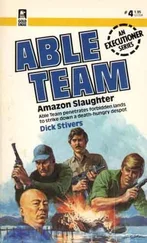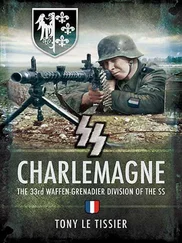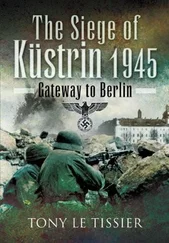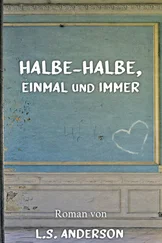The departure of Keitel and Jodl left only General Krebs and his aide, Major Bernd Freiherr Freytag von Loringhoven, representing the General Staff in the Führerbunker , so a third officer, Cavalry Captain Gerhard Boldt, was summoned from the OKW at Krampnitz to assist with the preparation of situation reports for presentation to Hitler. [8] Von Loringhoven interview in the film Der Todeskampf der Reichshauptstadt [Chronos-Film].
That night Moscow issued a directive ordering 1st Byelorussian and 1st Ukrainian Fronts to surround the German group south-east of Berlin by 24 April at the latest and to prevent 9th Army’s forces breaking out towards Berlin or the west by all means. The withdrawal of the bulk of 9th Army into the Spreewald had not been anticipated in the planning for Operation Berlin, so this major development had now to be contended with on the move. A German concentration of this size could not be ignored.
Marshal Koniev reacted the same night, ordering:
• 28th Army will secure its troops standing in front of Berlin with two divisions along the sector Bohnsdorf–Mittenwalde–Teupitz, organize a stable defence to the east, and prevent any attempt by 9th Army to break out through its rear to the west or south-west.
• 3rd Guards Army will attack 9th Army.
• 3rd Guards Tank Army will occupy Buckow (in south-east Berlin) and take measures to link up with the forces of 1st Byelorussian Front in the rear of 9th Army.
To comply with Moscow’s instructions, Marshal Zhukov issued the following directive:
• 3rd Army, hitherto in the front’s second echelon, is to attack in the direction Wildau–Brusendorf–Jühnsdorf–Michendorf and immediately to secure the sector Gosen (south of Erkner) – Hartmannsdorf (Lower Spreewald) – Winkel (west bank of the Spree).
• 2nd Guards Cavalry Corps is to attack southwards in the direction Busch [Buchholz?] – Leibsch and attain the sector Krausnick–Leibsch–west bank of the Scharmützelsee and, with a front facing east, prevent the forces of 9th Army withdrawing to the west.
• 69th Army is ordered to attack southwards with its right wing, occupy the sector Scharmützelsee–Bad Saarow– Ketschendorf, and prevent a withdrawal of elements of 9th Army to the west and north-west. Its left wing is to attack in the general direction of Briesen–southern tip of the Scharmützelsee.
• 33rd Army is to attack generally in a south-westerly direction with its right wing on Beeskow–Alt Schadow and tie down the enemy troops by active engagement. [9] Lakowski/Stich, Der Kessel von Halbe 1945 , p. 48.
Zhukov’s orders to 3rd Army show how totally ignorant he was of Koniev’s progress and deployment when he issued them, for occupying the line Wildau–Michendorf was the role he had originally intended for 1st Guards Tank Army in securing the southern approaches to Berlin. On the other hand, Koniev’s directive would appear to reflect his preoccupation with the attack on Berlin, in which he was hoping to beat Zhukov to the prize of the Reichstag, whereas Zhukov was now sufficiently confident in his advance on the city centre to allocate resources and plan the destruction of the ‘Frankfurt–Guben group’ in some detail, while still trying to block Koniev from Berlin.
By pushing forward the bulk of 69th Army, together with 3rd Army from his second echelon, Zhukov was applying pressure on the truncated 9th Army from the north and also protecting the southern flank of his thrust on Berlin. By evening his 3rd Army had a bridgehead across the Spree south of Erkner and was probing down to the Oder–Spree Canal, where the 32nd SS Volunteer Grenadier Division 30. Januar was hastily trying to establish a defensive screen. [10] GPW , p. 381.
The arrival of advance units of Colonel-General Rybalko’s 3rd Guards Tank Army in the southern outskirts of Berlin on 23 April was the high point of Koniev’s day. It would take another day for the remainder of the army to catch up and prepare to cross the major obstacle of the Teltow Canal, for which he ordered an attack on the morning of 24 April. In addition to the infantry reinforcements already allocated, he sent 10th Breakthrough Artillery Corps and 25th Breakthrough and 23rd Anti-Aircraft Artillery Divisions, which were to travel by night to avoid detection. He also allocated 5th Air Fighter Corps of 2nd Air Army in support. In the meantime 3rd Guards Tank Army was to secure the suburb of Buckow on its right flank and to try and establish contact with 1st Byelorussian Front, whose troops were expected in that area. [11] Koniev, Year of Victory , pp. 131–2.
Koniev had beaten Zhukov to the southern suburbs of Berlin, but he needed to use the 23rd to amass sufficient strength for his attack on the city proper next day, which he intended to supervise in person. A major threat to his lines of communication having been removed with the elimination of the Cottbus defence, 3rd Guards Army was now ordered to turn its attention to the western flank of the German 9th Army. [12] Ibid ., pp. 128–9, 132.
The redeployment of forces on 9th Army’s northern front as a defensive screen proved to be too weak and too late to be effective. Although Battlegroup Krauss had reached the Oder–Spree Canal at Wernsdorf and SS-Major Egger’s 1st Battalion, 86th SS Grenadier Regiment, had reached Neu Zittau the day before, the Soviets arrived soon afterwards and forced a crossing near Neu Zittau, thus bypassing Wernsdorf and obliging SS-Captain Krauss’ troops to fall back on Königs Wusterhausen via Niederlehme.
However, this withdrawal was not all one-sided, as SS-Second Lieutenant Porsch of Tank-Hunting Company Dora II of the 500/600th SS Punishment Battalion wrote:
We still had several nuts to crack, tanks as well as Russian infantry. Ehlers bagged his 14th, Schuler his 12th, myself my 17th, the company its 125th. During a reconnaissance near Neu Zittau we took 30 prisoners, and finally Ehlers and myself captured a Soviet battalion headquarters, 14 officers, including some women. [13] Wilke archives.
At the railway station in Königs Wusterhausen Krauss found an ambulance train that had already been attacked several times by Soviet aircraft that had no respect for the Red Cross. His own troops were under fire from a column of T-34s that were firing at anything that moved, including civilians trying to help the wounded, so he withdrew to Prieros. [14] Tieke, Das Ende zwischen Oder und Elbe , pp. 188–91.
Further east the 561st SS Tank-Hunting Battalion, together with 1st Battalion, SS-Regiment Falke , deployed in the Biegen-Pillgram area, launched a counterattack on Rosengarten, opening and holding open a breach in the Soviet cordon around Frankfurt through which the garrison was able to evacuate that night. [15] Ibid ., pp. 186, 192.
FIVE
12th Army to the Rescue
23 APRIL 1945
Field Marshal Keitel reached General Wenck’s headquarters in the woods east of Magdeburg with some difficulty at about 0100 hours on 23 April. Wenck’s 12th Army, whose boundary extended from the junction of the Havel and Elbe Rivers in the north to below Leipzig in the south, consisted of the following formations:
XXXIX Panzer Corps , under Lieutenant-General Karl Arndt, which had been sent into the Harz Mountains to support 11th Army and had been virtually destroyed within five days. Its remnants had only been re-assigned to 12th Army on 21 April.
XXXXI Panzer Corps , under Lieutenant-General Rudolf Holste, which was based near Rathenow, and consisted of miscellaneous units, some of which were survivors of the Rhine battles.
Читать дальше












